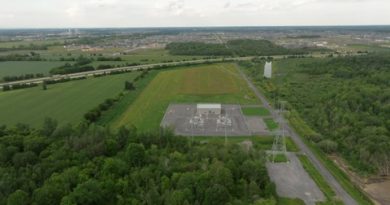More Trash Talk: Technology Will Play A Key Role In Waste Management
By Wilson Lo, Barrhaven East Councillor
The Solid Waste Master Plan (SWMP) is nearing its final stages of development!
The SWMP is Ottawa’s strategy for managing garbage over the next 30 years. While the most consequential item within the plan is the end-of-life plan for the Trail Road Landfill, it includes strategies and technologies we could use to improve waste diversion rates.
The Trail Road Landfill will reach capacity in the mid-2030s. Even if residents further altered their disposal habits to give the landfill extra years, the reality is we need something new. Considering it takes 10 to 15 years from approval to it being operational, we need to decide on our next waste processing facility now.
The two technologies I’m favouring are mixed waste processing and waste-to-energy incineration. The former helps with diversion, while the latter is about the processing of the remaining material.
Mixed waste processing separates recyclables from the waste stream upon arrival at a facility. Historically, it was mostly as a means of capturing waste for energy production, but it is becoming an increasingly popular method of improving waste diversion rates, especially as technologies like optical sensors continue to evolve and improve.
The technology provides a balance between asking residents to adjust their disposal habits and overburdening residents with all sorts of rules and restrictions. Doing too little and too much may compromise waste diversion objectives, so striking that balance is important and necessary.
After the processing, residual materials can then pass on to an incinerator, where the material is…well, incinerated. Incineration gives our residual garbage extra lives as a fuel, electricity, and even secondary aggregate for construction.
To be fair, early incinerators were dirty, polluting, and harmful factories. As technology and environmental care improved, they have given way to modern incinerators, which adhere to significantly stricter environmental standards of our time.
Given that Canadians love using Europe as a baseline, several European countries began using waste-to-energy after the European Union banned untreated wastes from landfills around the new millennium.
Whether it’s mixed waste processing, waste-to-energy incineration, or both, it’s undeniable these facilities will require significant capital to build and operate.
Thankfully, both facilities present major revenue opportunities to help offset those costs, mostly through accepting garbage from other sources, but also through the sale of any fuel, electricity, and secondary aggregate.
Using those technologies is not the lazy way out, though. It does not mean an end to sorting out recyclables and organics from garbage, nor does it mean we should become a more wasteful society. We need to maintain the good habits most people have developed to reduce the amount of new material entering the production cycle.
These exciting opportunities are our future, but we need to be careful as to where we locate these facilities, as neighbours in Half Moon Bay and Quinn’s Pointe will attest.
Given the financial, environmental, and habitual implications of the SWMP, plus the opportunity of a generation to make a major change, it’s important we make the right choice for the future of waste disposal.
City staff wrapped up the last series of public engagements on the Solid Waste Master Plan earlier in the month. Staff are currently on track to completing the SWMP in time for presentation and vote by Council in June.






